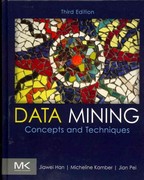Question
Assignment 2 Introduction As I eluded to in the last lecture, assignment 2 is going to be about demosaicing. It will consist of 3 parts
Assignment 2
Introduction
As I eluded to in the last lecture, assignment 2 is going to be about demosaicing. It will consist of 3 parts -
Note that you are not to use any library outside of what is available by default in the programming language you choose.
-
Just like before there are 3 text files for you, you won't have to change any code or redo any work for each except for change the width and the height numbers. You just have to run your code for each text file.
-
You will be given a list of values, just like before; but this time around instead of a voltage, an intensity value that is already scaled up to 0-255 (for 8-bit color).
-
Each value corresponds to the intensity recorded at each photodiode. You should assume the photodiodes have a Bayer color filter array installed in front of them. Meaning where last time around you had 256 * 256 photodiodes producing 256 * 256 values - this time around you will have 256 * 256 * 4 photodiodes instead. 4 photodiodes will correspond to a single pixel in the final image (for the simple demosaicing algorithm we'll be implementing).
-
As an "output" for each Part of the assignment, you will be creating a text file using the program you write. Each part is going to ask of you to create an image, and each image will be in this following format -
- The first line in the file will be RGB to represent that the image uses the RGB colorspace. RGB will be followed by a newline , so - RGB .
- The second line will be a number representing the height of the image in pixels, so 256 for an image consisting of 256 pixels.
- The third line in the image would be the width of the image in pixels, so 512 for a 512 pixel wide image.
- From the fourth line onwards you will have the RGB color for each pixel, so 144 72 44 for the color rgb(144, 72, 44). You will have as many lines as pixels in your image.
You will be also given a binary to view the "images" in these files later, along with instructions on how to use the binary.
-
Part A
-
Part A is worth 20 points.
The first task is simply to convert the list of intensity values given to the above image format, take a screenshot of the images using the supplied binary, and attach both the image text files and the screenshots and submit.
You are to also describe, briefly, what you see in the image and why you think it looks the way it does.
Just to elaborate a little, last time around you were given a list of voltage values, which you stacked, like so -

This time around, the images have a bayer color filter array in front of them, like so -

Since you won't be performing any demosaicing, the colors won't be "merged". Instead you can leave them as is. For instance, if the first intensity value in your file is 84; and the Bayer pattern tells you that the first photodiode is meant for the color blue, then you can represent it as rgb(0, 0, 84), or 0 0 84 in the file.
What we did there was we just set the other components to 0, and the blue component to the value we were given.
Do make sure the resolution you enter in the file properly corresponds to the number of pixels in the output image
Part B
Part B is worth 60 points
The second part is where you will actually perform the demosaicing, basically, this -

You will be "combining" the intensity for 4 photodiodes into 1 by doing this -

Again, take a screenshot of the image using the supplied binary, and attach both the image file and the screenshot and submit.
Do make sure the resolution you enter in the file properly corresponds to the number of pixels in the output image
Part C
Part C is worth 40 points
This time around you will be doing this instead -

Again, take a screenshot of the image using the supplied binary, and attach both the image file and the screenshot and submit.
Do make sure the resolution you enter in the file properly corresponds to the number of pixels in the output image
Step by Step Solution
There are 3 Steps involved in it
Step: 1

Get Instant Access to Expert-Tailored Solutions
See step-by-step solutions with expert insights and AI powered tools for academic success
Step: 2

Step: 3

Ace Your Homework with AI
Get the answers you need in no time with our AI-driven, step-by-step assistance
Get Started


